Top Russian Hypersonic Scientist Sentenced to 7 Years for Treason - The Moscow Times
Summary
- Alexander Kuranov, head of a hypersonic research institute in St. Petersburg, was recently sentenced to 7 years in prison for treason. Several other scientists have been arrested on similar charges in recent years.
- Russia has been developing hypersonic missiles and aircraft for decades, including the Ajax hypersonic multi-purpose aircraft concept proposed in the 1980s. This aimed to use aerodynamic heating to power onboard systems.
- - In 2004, Russia tested the X-90 Koala, claimed to be the world's first maneuvering hypersonic missile launched from Tu-160 bombers. It is said to be capable of overcoming missile defense systems.
- - To carry the new X-90, a modified version of the Tu-160 strategic bomber, the Tu-160M, was developed with enlarged wings.
- - The arrests of the scientists are thought to be politically motivated to demonstrate the prowess of Russia's missile programs. Critics see them as paranoid actions by the state.
A top Russian scientist developing hypersonic technologies has been sentenced to seven years in prison on charges of state treason, a spokeswoman for St. Petersburg’s judiciary said Thursday.
Alexander Kuranov, the head of a St. Petersburg state research institute who oversaw the Soviet-era Ayaks hypersonic aircraft program, was arrested in 2021 at age 73.
Investigators reportedly accused Kuranov of working with and passing secrets on scientific advances to foreign nationals.
St. Petersburg’s City Court found Kuranov, 76, guilty of state treason and sentenced him to seven years in a high-security prison, said Daria Lebedeva, who heads the city’s judicial press service. He was also fined 100,000 rubles ($1,000), she added.
Lebedeva noted that it took two trials to reach the verdict. She did not specify which mitigating circumstances contributed to the sentence, which was lower than the 12-year maximum under Russian law.
“The case was heard behind closed doors due to the presence of a ‘Top Secret’ stamp,” Lebedeva wrote on the messaging app Telegram.
Russia has stepped up treason convictions since ties with the West deteriorated following its annexation of Crimea from Ukraine in 2014 and the full-scale invasion of Ukraine in 2022.
Supreme Court data analyzed by independent media this week showed record numbers of convictions for state treason, espionage and disclosure of state secrets in 2023.
Critics have slammed the arrests of scientists, journalists and regular civilians on charges of sharing sensitive information with foreigners as examples of the state's paranoia.
Russian Rocket Scientists Jailed for High Treason: Full List
Vladimir Putin has boasted about Russia's hypersonic missile capability, but working on the program that flexes Moscow's military might is fraught with risk, following the latest jailing of a scientist involved in its research.
In March 2018, Putin boasted to Russian lawmakers how the missiles, which are faster and more agile than standard ones, were "super weapons." Among them is the Kh-47 Kinzhal ("Dagger"), which Russia has used to strike Ukrainian cities in its full-scale invasion.
However, a number of scientists have been detained in what are thought to be politically motivated arrests linked to the missile program, including Alexander Kuranov, who was handed a seven-year sentence this week.
Yevgeny Smirnov, a lawyer who represented some of the defendants, told BBC Russian in February that the FSB intelligence agency informed him each accusation was reported to Putin in cases that aimed "to show that Russian missiles are the best." Newsweek has contacted the Kremlin for comment Saturday.
Here are some of those who have fallen afoul of the authorities for working in the highly sensitive area of Russia's military-industrial complex:
Alexander Kuranov
Kuranov was sentenced on Thursday to seven years in a maximum-security colony following his conviction of treason in contravention of Russia's Article 275 of the Criminal Code, a charge faced by more than a dozen other scientists.
The City Court of St. Petersburg also handed out a 100,000-ruble ($1,100) fine to Kuranov. He is a former general director and chief designer of the St. Petersburg Research Enterprise for Hypersonic Systems (NIPGS), who had been held in custody since August 2021.
Kuranov had taken part in the development of the Ajax (Ayaks) hypersonic aircraft and written articles and patents linked to missiles, as well as participating in seminars in which he cooperated with other experts from the U.S. and from China.
Alexander Shiplyuk
Director of the Khristianovich Institute of Theoretical and Applied Mechanics (ITAM) in Novosibirsk Siberia, Alexander Shiplyuk was arrested in August 2022.
Shiplyuk is an expert in high-speed air and gas dynamics. He had written articles published in foreign journals and co-edited a book published by the American Institute of Physics.
Stuart Laurence, associate professor of aerospace engineering at the University of Maryland, told Reuters he met Shiplyuk at a conference and was "pretty sure" Shiplyuk would have been handling state secrets at ITAM.
Valery Zvegintsev, Vladislav Galkin
Zvegintsev was a chief researcher at ITAM who was arrested on April 7, 2023.
Between 1995 and 2000, Zvegintsev headed a research group at ITAM that studied combustion in gas flows, while in 2001 founded a lab at ITAM focused on high-speed air and gas dynamics.
Like his colleagues, Zvegintsev traveled abroad to conferences and published in international peer-reviewed journals. TASS reported that his arrest was linked to an article on gas dynamics he wrote, which was published in an Iranian journal.
His co-author, associate professor of Tomsk Polytechnic University Vladislav Galkin, was also detained.
Anatoly Maslov
Maslov is a physicist, chief researcher at ITAM and professor, whose research in viscous gas dynamics examines how gases move around physical objects, like missiles and jets during supersonic flights.
He was arrested on June 28, 2022 in Novosibirsk, accused of divulging state secrets related to hypersonics, according to an interview his sons Nikolai and Alexei gave to local media.
Maslov regularly attended conferences abroad and published in journals and collaborated with Shiplyuk and Zvegintsev on at least one occasion, co-authoring a book chapter published in 2016.
Anatoly Gubanov
Gubanov, from Moscow's Central Aerohydrodynamic Institute (TsAGI), was arrested in December 2020 accused of passing materials to colleagues in the Netherlands whom he worked with on the HEXAFLY-INT, a hypersonic airliner.
Russian authorities said Gubanov had conspired with his colleague and fellow physicist Valery Golubkin, who was also employed on the project and arrested on treason charges in April 2021.
Gubanov pleaded guilty and asked for a penalty below the minimum sentence of 12 years, which was denied on October 27, 2023.
Valery Golubkin
Golubkin was employed on the same project as Gubanov and arrested on treason charges in April 2021. Golubkin denied the charges against him, but was sentenced to 12 years in prison in June 2023.
The Perviy Otdel human rights project said that reports passed by Gubanov and Golubkin to their Dutch colleagues had been examined by three specialized commissions prior to submission, and none of them contained state secrets.
Vladimir Kudryavtsev, Roman Kovalyov, Dmitry Kolker
Kudryavtsev, a physicist with the Central Mechanical Engineering Research Institute (TsNIIMash) in the Moscow region, faced a treason case following his arrest July 2018 on suspicion of passing classified data on hypersonic technology to a research group in Belgium.
In April 2021, Kudryavtsev died of lung cancer at the age of 77 before he could stand trial, according to Russian media.
Kovalyov, a former senior official at the same institute, was convicted and sentenced to a lengthy prison term in June 2020 on a high-treason charge that he and his supporters rejected. He died in April 2022 of cancer.
Meanwhile, in July 2022, Kolker, a 54-year-old Russian physicist head of the Laboratory of Quantum Optical Technologies of Novosibirsk State University, died in custody after being flown to Moscow while he was undergoing treatment for pancreatic cancer.
The previous month, Kolker had been arrested on suspicion of passing information to China. "The FSB murdered my father," his son, Maksim Kolker, wrote on Russian social media platform VKontakte at the time.
Ajax Hypersonic Multi-Purpose Aircraft
The concept of a fundamentally new hypersonic device was put forward at the end of the 80s. Vladimir Lvovich Freistadt, working in the St. Petersburg Scientific-Research Enterprise of Hypersonic Systems (NIPGS) of the holding company Leninets. He proposed not to protect the device, flying at a tremendous speed, from heat, but, on the contrary, to let it in to increase the energy resource. According to the Ajax concept, a hypersonic aircraft (GLA) is an open non-isolated aerothermodynamic system in which at all stages of atmospheric flight some of the kinetic energy of the flowing HVA hypersonic air flow is assimilated by the onboard subsystems, increasing the overall life of the device and transforming into chemical and electrical energy. This solved the global issue of cooling the airframe and many other problems.
Initially, Ajax was created as a response to the American plans to create an Aurora hypersonic reconnaissance aircraft, later it was “converted” into a hypersonic global-range aircraft or the first stage to put the payload into orbit.
Hypersonic LA uses hydrocarbons (kerosene or more promising fuel - liquefied methane) and water as fuel. For heat recovery, a thermochemical reactor is placed in the Ajax double skin, in which, after acceleration and aerodynamic heating of the skin, hydrocarbon fuel is supplied. It is used as "endothermic" fuel - absorbs heat. Under the action of temperature, pressure and with the help of a catalyst, the fuel / water mixture is decomposed into olefin and free hydrogen. This hydrogen-containing mixture enters the magnetic-plasma-chemical engine, which is an MHD generator, a hypersonic ramjet, and an MHD accelerator behind the combustion chamber. MHD generator, braking the flow to the optimum speed, acts as a compressor. Inhibited and pre-ionized air flow enters the combustion chamber, which is supplied with hydrogen-rich fuel (kerosene or methane). The effluent combustion products enter the nozzle, are additionally accelerated by the MHD accelerator and, expanding, exit to the outside. To accelerate the flow and to ionize the air - creating a "cold plasma" - uses electricity generated by the MHD generator. This allows you to increase the speed of the aircraft on 10-30% and get a number of advantages. The plasma funnel around the scramjet air intake increases its effective diameter up to almost a hundred meters, plasma spots-clouds in front of the aircraft significantly reduce air resistance, and near the wings increase their effective area and regulate lift. For the ionization of air, it is possible to use laser radiation or a neutron source.
Thus, the device flying in the atmosphere will be able to convert the kinetic energy of the incoming air flow into a wide range of different types of energy and use the onboard power complex with a power of 100 MW for the most varied planetary tasks. Based on the Ajax concept, GNIPGS developed a family of hypersonic LA “Neva” for the near-earth or orbital transportation of payloads or passengers.
The revolutionary concept of “Ajax” has a large coefficient of novelty, and therefore technical risk. Only by 1993, the expert committee of the largest scientists made the final verdict: "The concept of" Ajax "and its main areas do not contradict the data of modern science." In the same year, a meeting of the Scientific and Technical Council of the State Committee on Defense Industry was held.
The NIPSS, headed by Director General Alexander Leonidovich Kuranov, is actively promoting the concept and is looking for sources of financing for its implementation. And in May 2001, the press service of the holding announced that the Leninets Holding Company OJSC (St. Petersburg) signed an agreement with China on joint work on a hypersonic aircraft (Ajax concept). The project is designed for 10-15 The volume of investments has not yet been determined, but, according to experts, about 70-80 million dollars are spent on the development of such a project abroad. According to the press service of Leninets, the parties plan to sign financial documents for the project in September 2001. The agreement also provides for cooperation in the field of and development of electronic equipment for various types aviationsatellite navigation systems.
The world's first maneuvering X-90 Koala hypersonic rocket (“AS-19 Koala”).
In February 2004 of the year, during the command and staff exercises of the 2004 Security exercise, in the presence of President Putin, the world's first maneuvering hypersonic missile was successfully tested. New Russian weaponlaunched from strategic bombers Tu-160, must overcome any missile defense system.
Russia, with the help of a new super-weapon, wants to show America its capabilities. It is called X-90 and is the Kremlin’s response to the Washington missile defense program. In the west, the project is known under the harmless name “AS-19 Koala”. Under the designation X-90 hides, according to Russian data, the world's first hypersonic guided cruise missile, the appearance and tactical-technical data of which are military secrets. According to reports, it should be adopted by the 2010 year.
The X-90 is launched with the help of the Tu-160M strategic bombers, which are the symbol of Russian military might. “M” - modified - means in this case that the wings of the machine are enlarged.
According to Putin, X-90 is able to overcome all existing, as well as promising missile defense systems and destroy targets with great accuracy, including on other continents. A prototype of a “miracle weapon” was tested in February 2004 of the year, during the command and control exercises “Security 2004”, in the presence of President Putin, with the PC-18 intercontinental missile (NATO designation SS-19 Stiletto) as a carrier, and in the near future will be in service with the strategic missile forces.
History X-90 began in 1971 year. Then the developers turned to the USSR government with a project to build small strategic cruise missiles that could operate at low altitudes, applying to the terrain. This proposal did not find a response from the leadership at that time, however, after the United States began developing strategic cruise missiles (Cruise Missile) in 1975, they remembered it. Missile developers were ordered to start development in the middle of 1976. It should have ended by the middle of 1982. Already by December 31 1983 rocket supposed to adopt. One of the main requirements was to provide the rocket with supersonic speed.
At the end of 70-x-90 reached the speed of 2,5-3, and in 80-x already 3-4 M. Visitors to the MAKS-1997 air show could admire the experimental hypersonic aircraft GLA.
GLA is the prototype of a new cruise missile. It must carry two individual-targeting warheads that can independently hit targets at a distance of up to 100 km from the point of separation from the main rocket. The Tu-160M bomber is assumed to be the carrier.
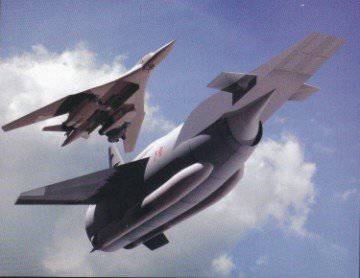
At that time, the X-90 CHA, equipped with a ramjet engine, was about 12 meters long. The current rocket does not exceed 8-9 meters.
After separation from the carrier aircraft at a height of 7000-20000 meters, a triangular wing with a span of about seven meters, as well as tail tails, opens. Then a solid-fuel accelerator is turned on, which accelerates the rocket to supersonic speed, after which the cruise engine comes into play, providing the speed of 4-5 M. The radius of action is 3500 kilometers.
According to the Kremlin, no state in the world possesses hypersonic rockets. The United States at one time abandoned their development for financial reasons and limited to subsonic. In Russia, work was also carried out inconsistently, but pauses were short. Already in July, 2001, the press reported on the launch of the Topol rocket. Noteworthy was the behavior of the warhead that was unusual for ballistic specialists. Then it was not confirmed that the warhead is equipped with its own engine, allowing it to maneuver in the atmosphere at hypersonic speed. The 2004 teachings of February, which were first mentioned throughout the entire territory of Russia since 1982, turned out to be a real sensation. During these exercises, two ballistic missiles were launched: one Topol-M and one PC-18. As it turned out later, the PC-18 was equipped with some kind of experimental apparatus. He went into space, and then again “dived” into the atmosphere. This maneuver seems at the present level of technology incredible. At the moment the warhead enters the dense atmosphere, its velocity is 5000m / s (approx. 18000 km / h). Therefore, the warhead must have special protection against overloads and overheating. The experimental apparatus had no less speed, however, it easily changed the direction of flight and did not collapse. Miracles in aerodynamics does not happen. American shuttles and the Soviet Buran, modern fighters have common features. Apparently, the unit tested during the exercise is similar to the X-90. To this day, its true appearance is, as already mentioned, a state secret.
"This unit can overcome the regional missile defense system," - said the representative of the General Staff, Colonel-General Yuri Baluevsky at a press conference after the exercise. Unlike the existing ballistic warheads, this device is capable of “changing the flight trajectory at any time in accordance with the program laid down in advance, or it can be redirected to another target over the enemy’s territory”.
Instead of a conventional warhead, which follows a fixed trajectory and can theoretically be intercepted by an antimissile, there was a device on the PC-18 capable of changing the height and direction of flight, and thus overcoming any, including the American, anti-missile system. When asked by journalists how, in his opinion, the United States will respond to this news, President Putin said: "The United States itself is actively developing its own weapon." The President recalled that Washington had recently withdrawn from the ABM Treaty, stating that this step was not directed against the Russian Federation. The modernization of existing and the development of new weapons systems in Russia is also not directed against the United States, President Putin assured, adding: “Together with other states, Russia is responsible for stability and security on the huge Eurasian continent.”
Russia's strategic missile forces include:
3 rocket armies, 16 rocket divisions. They are armed with 735 ballistic missiles with 3159 nuclear warheads. These include 150 Р-36М УТТХ and Р-36М2 “Voyevoda” of mine base (NATO designation of both types SS-18 Satan), carrying 10 independently controlled warheads each, 130 of mine UR-100ТТТX (SS-N-to-to-to-to-S-S-to-S-S-S-S-S-S-S-S-S-S-S-N-N-N-N-N type -GNUMX every-one, 19 shaft-type UR-780 Satan XMNUMXMTTX and P-36М23 “Voyevod” mine) base, each of warheads and 360 RT-360 UTTH “Good for you” with 2 warheads based on railway complexes, 25 mobile monoblock complexes RT-39РМ Topol (SS-2 “Sikl”) and 2 of the latest mono-block PT-systems, which are provided by the IT department of the IT department of the CT department of the IT department of the Center for IT systems, and the 27 of the newest mono-block complex PT-CTnTXNMX and the 2 of the newest mono-block RT-CTnTXNMX (SS-XNUMX "Topol-MXNUMX").
According to Russian experts, equipping even a small part of this arsenal with cruise warheads will make the Russian rocket forces “for decades ahead” invulnerable to any missile defense system. Even George Bush’s upcoming missile defense will turn into a “super-expensive and useless toy”. In addition, Russian experts remind that the hypersonic warhead is not the only development in this direction. There are also programs “Cold” and “Igla” flying laboratory, where the details of the Russian Aerospace Aircraft (RAKS) are tested. All of them may be part of a unified plan for creating a maneuvering warhead that is invulnerable to a promising missile defense system.
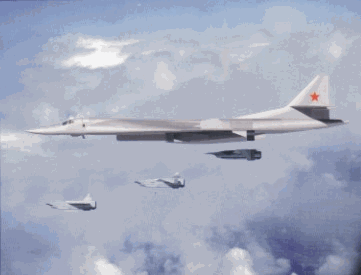
The idea of overcoming missile defense systems is in principle not new. Back in 60-ies in the Soviet Union created the project “global rocket”. The idea was to launch a warhead into a near-earth orbit using a booster rocket, where it would turn into an artificial satellite of the Earth. Then, on command, the brake motor was activated, and the warhead was sent to any target for its destruction. At that time, the United States adjusted its missile defense system on the assumption that Soviet missiles would fly up at the shortest distance across the North Pole. As a first-strike weapon, it is difficult to imagine anything better, since global missiles could attack the United States from the south, where the Americans did not have radars to detect incoming missiles and take countermeasures. 19 November 1968, this Soviet system was put into service and in small quantities put on combat duty. At the Baikanur cosmodrome, 18 P-36 orb rockets were deployed. (orbital) mine-based. After the conclusion of the SALT-2 contract banning orbital rockets, the system was dismantled. Although the treaty was not ratified, the USSR and the USA adhered to its terms. In 1982, the dismantling and destruction of the P-36 orb began, which ended by May 1984. Launch complexes were blown up.
Perhaps now, at a new technological level, the system will survive a rebirth. This means that the US missile defense, in which the US is investing tens of billions of dollars, loses its meaning. Therefore, the United States is now starting to deploy radar systems near the Russian borders in order to detect and destroy missiles immediately after launch, before the separation of the warhead.
But for this, according to experts, there are a number of countermeasures, partly developed in the framework of the Soviet program of counteraction of the PIO. So, attempts to intercept can be hampered by the fact that the rocket, in the active phase of flight, performs an orbital maneuver. For example, the Topol-M rocket, according to the statement of its General Designer Yu.Solomonov, can perform vertical and horizontal maneuvers. In addition, the trajectory that does not leave the dense layers of the atmosphere makes it difficult to intercept. And in a critical situation, Russian generals can return to the idea of global missiles. And this is not a complete list of countermeasures to avoid intercepting missiles at the active stage. When the X-90 hypersonic warhead separates from the missile, it is practically invulnerable.
This is the pride of the Russian Air Force - the Tu-160 strategic bomber worth billions of rubles. Due to its slim, elegant form, it is affectionately called the “White Swan”. However, its other names more closely correspond to reality - “Sword with 12 blades” (due to 12 cruise missiles on board), “Weapon of the Nation”, “Restraining Factor”. It is also called the “Russian flying wonder”, and NATO stands for Blackjack. The first rocket carrier was built in 1981 year. Initially, 100 of such vehicles had to be put into operation, but since the Americans insisted on including this class of bombers in the START treaty, the USSR limited itself to 33 units.
After the collapse of the Soviet Union, the Tu-160 were divided between the former Soviet republics. Currently, Russian long-range bomber aviation has 14 bombers of this class. They were originally 15, but one of them crashed over the Volga in 2003 year. Each car has its own name, for example, “Ilya Muromets” or “Mikhail Gromov”. The last of this list, “Alexander the Younger,” became operational in 2000. All of them are based in Engels on the Volga. For armament X-90 aircraft plane were increased. This modification is called Tu-160M.
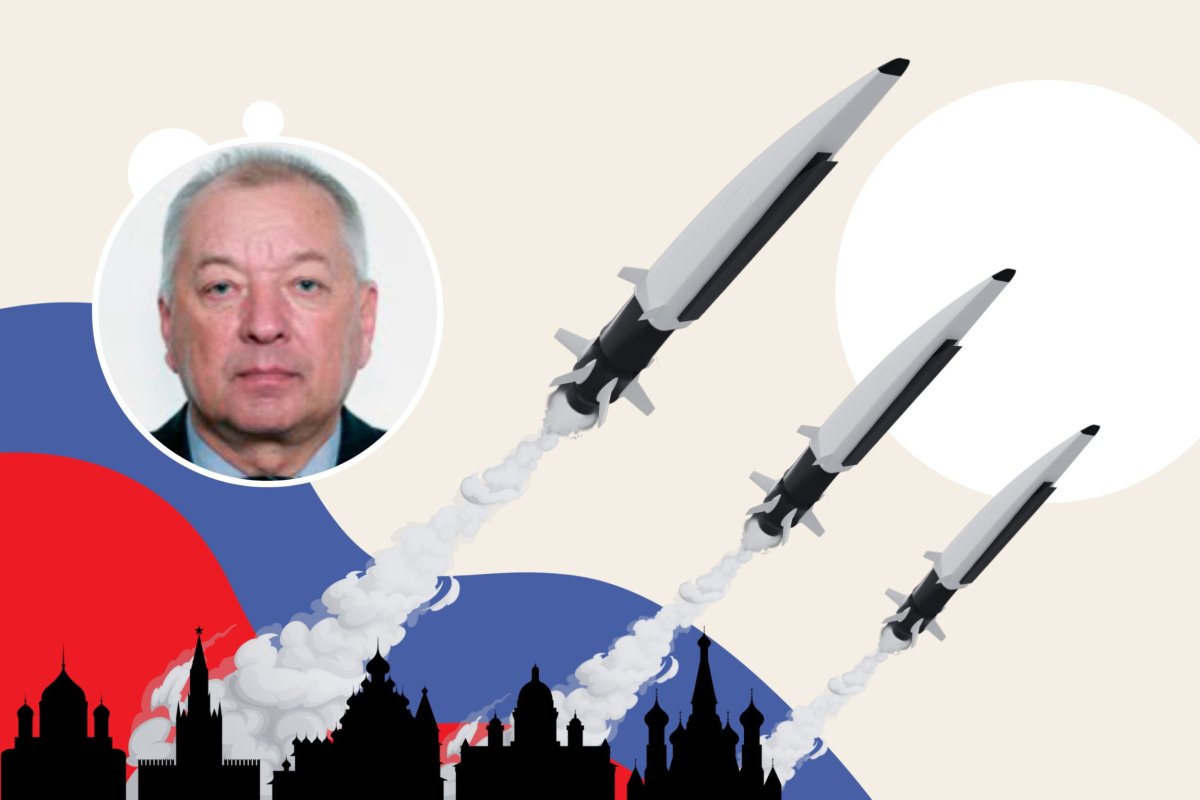
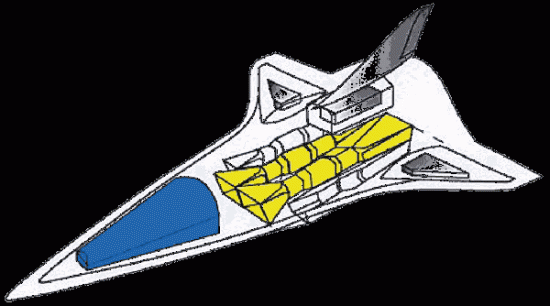
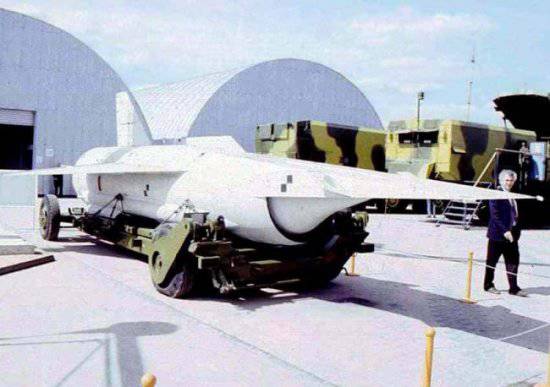

Comments
Post a Comment